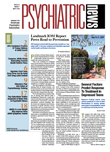The Canadian Psychiatric Association (CPA) is urging its members to collaborate with journalists and editors who are covering stories about suicide to educate them about ways of reporting that do not encourage“ copycat” behavior or increase stigma.
This was one of the recommendations in a policy paper titled “Media Guidelines for Reporting Suicide,” in which the CPA summarized recommendations formulated by the U.S. Centers for Disease Control and Prevention and the Canadian Association for Suicide Prevention (among other organizations) for journalists.
“Since media often call psychiatrists to comment on suicide,” states the paper, “it is crucial for psychiatrists to have this knowledge readily available. These requests can be an opportunity for educating the media and ultimately saving lives.”
“This policy paper is intended for psychiatrists to have on hand if they get contacted by journalists,” said Josh Nepon, M.D., a first-year resident at the University of Manitoba and an author of the policy paper.“ The take-home message is that there is solid evidence in the psychiatric literature that there are dangerous and safe ways of reporting suicide.
“These recommendations need to be in media hands so they can implement them,” Nepon told Psychiatric News. “They will save lives.”
The recommendations include avoiding reporting the following:
•
Details of the suicide method
•
The word “suicide” in the headline
•
The idea that suicide is unexplainable
•
Repetitive or excessive coverage
•
Romanticized reasons for the suicide
•
Simplistic reasons for the suicide
In contrast, the recommendations encourage journalists to convey the following when reporting a suicide: alternatives to suicide (that is, treatment); community resource information for those with suicidal ideation; examples of a positive outcome of a suicidal crisis, such as calling a suicide hotline; warning signs of suicidal behavior; and ways to approach a suicidal person.
Similar recommendations have been published by the American Foundation for Suicide Prevention, in collaboration with the American Association of Suicidology, the Centers for Disease Control and Prevention, the National Institute of Mental Health, the Substance Abuse and Mental Health Services Administration, the Office of the Surgeon General, and the Annenberg Public Policy Center.
Nepon said there is evidence of the way journalism can influence suicide contagion. In the 1980s a rash of suicides occurred in Austria by people throwing themselves in front of subway trains; the suicides were publicized in a way that a “copycat effect” began to be obvious to policymakers and psychiatrists as well as to the media, he said.
The epidemic abated after guidelines for “safe” media reporting were produced and media outlets began to monitor their reporting, Nepon said.
Nepon said the CPA policy paper is an outgrowth of the Swampy Cree Suicide Prevention Team (SCSPT), led by Canadian psychiatrist Jitender Sareen, M.D. The Swampy Cree are an Aboriginal tribe in northern Manitoba. According to the Web site of the SCSPT, “Suicide, especially in Aboriginal youth, is an enormous problem in Canada. Although not well understood, Aboriginal suicidal behavior is a complex problem linked to individual, family, community, and sociocultural factors.”
“Media Guidelines for Reporting Suicide” is posted at<http://publications.cpa-apc.org/media.php?mid=733&xwm=true>. The CDC's recommendations are posted at<www.cdc.gov/mmwr//preview/mmwrhtml/00031539.htm>. Recommendations by the American Foundation for Suicide Prevention are posted at<www.afsp.org/media>.▪
